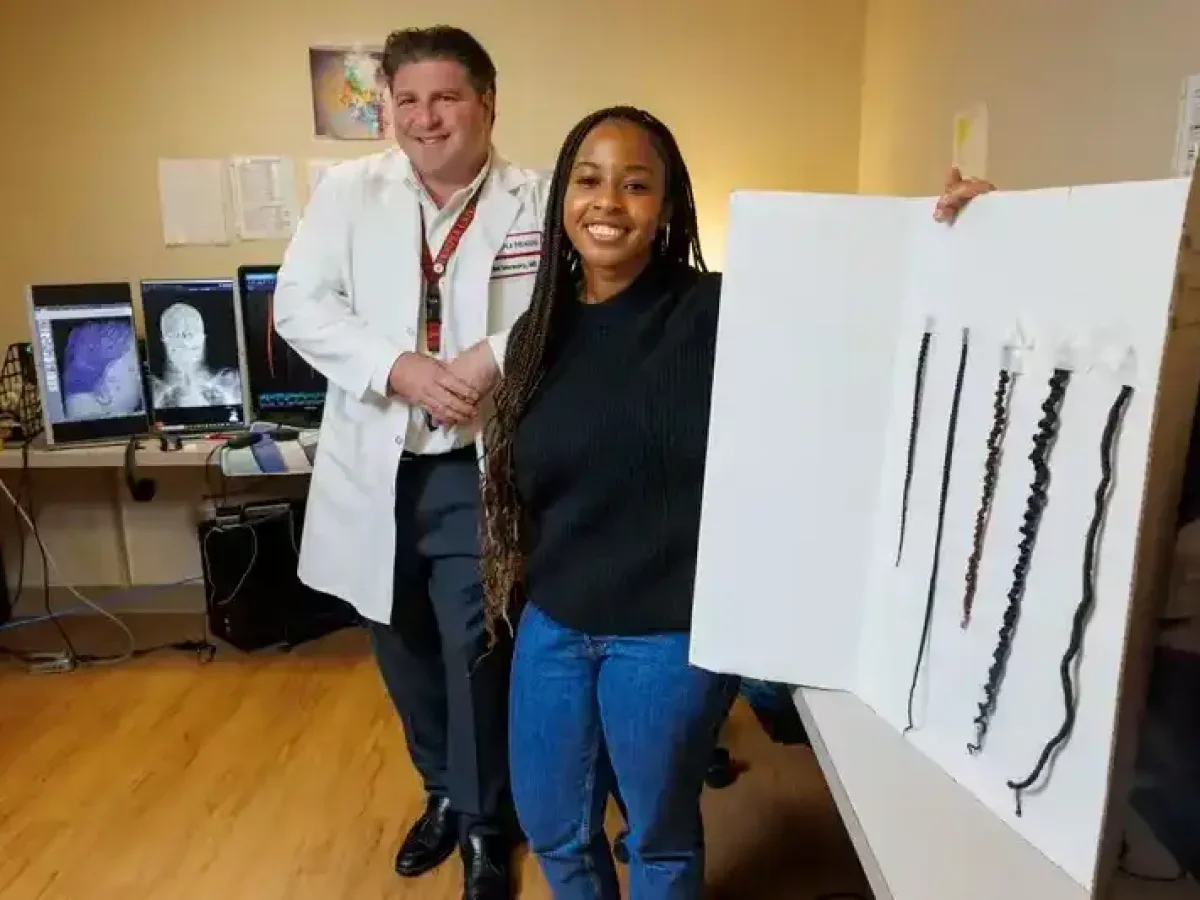
When Black patients get X-rays, unfortunately, many doctors have not been trained to “to identify the twists, locs, and braids of Black patients’ hair when reading” the scans.
But Angela Udongwo, a medical student at Temple University, is on a mission to change that. Udongwo has partnered up with her mentor Hillel Maresky a radiologist from Temple University, “to educate physicians to distinguish artifacts from illness so Black patients get better care.”
“Whenever something obscures the image from a scan, physicians call it an artifact. The artifacts from common Black hairstyles appear as opaque squiggles, and can be mistaken for signs of disease,” The Philadelphia Inquirer reports.
In addition, “The medical literature on how to interpret these artifacts is sparse, leaving physicians room to make errors. This may lead them to direct patients to get more tests, a potentially costly inconvenience that can also expose them to unnecessary radiation.”
According to the Radiological Society of North America, “These disparities have existed within the field of radiology and professional medical organizations since their inception.”
“Explicit and implicit racism against Black patients and physicians was institutional policy in the early 20th century when radiology was being developed as a clinical medical field,” the article continued. “Early radiology organizations also embraced this structural discrimination, creating strong barriers to professional Black radiologist involvement.”
Sadé Lewis experienced this firsthand, saying “patients were told to remove all hair extensions, braids, cornrows, and wigs. Also, she was to wash her hair with a mild shampoo the night before the appointment and not use any conditioners, hair creams, sprays, oils, or styling gels,” the news outlet wrote.
“The first thing I literally did was text it to my best friend, and I was, like, this is kind of anti-Black,” she stated. “I just feel like it creates a bunch of confusion, and it alienates patients who obviously need these procedures done.”
Fortunately, this issue is now being tackled by future practitioners. And [t]he Temple researchers plan to use their findings to create educational materials to teach radiologists about braids, locs, and twists, and how their presence can affect their imaging reviews.”
In fact, “Udongwo has presented the early findings of their research at a conference of the Pennsylvania Radiology Society…[and] Maresky wants to share this information with his mostly white peers. He thinks Temple can lead the way on developing best practices for interpreting images of patients with these hairstyles.”





